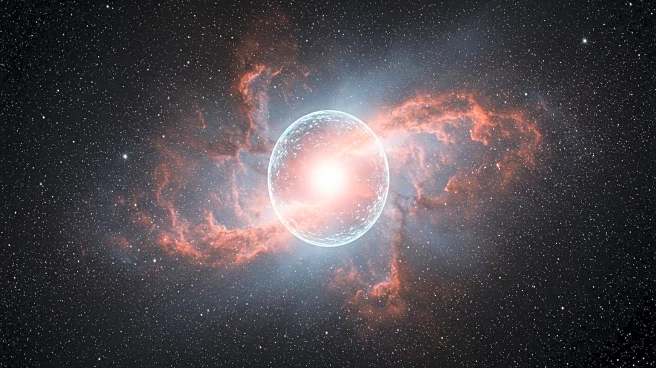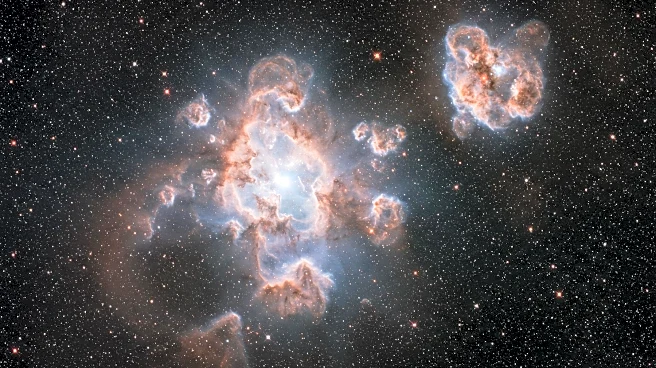What's Happening?
Scientists have discovered a powerful and mysterious astrophysical object named 'Punctum' in the NGC 4945 galaxy, located about 11 million light-years from Earth. The object was identified using the ALMA telescope and has only been observed in millimeter wavelengths, challenging conventional understanding of space objects. Punctum is significantly brighter than typical magnetars, microquasars, and nearly every known supernova, raising questions about its composition and origin. Its emissions may be linked to synchrotron radiation, suggesting a highly active and energetic core.
Why It's Important?
The discovery of Punctum underscores the evolving capabilities of observational technology, such as ALMA, in unveiling previously hidden phenomena. It challenges existing astrophysical classifications and suggests the potential existence of a new type of cosmic object. This finding could reshape the landscape of astronomical inquiry and prompt further exploration into the nature of such enigmatic objects.
What's Next?
Future observations with the James Webb Space Telescope (JWST) could provide critical insights into Punctum's nature. JWST's advanced infrared capabilities may detect emissions that refine theories about the object's composition and behavior. Until then, Punctum remains an intriguing mystery in the cosmos, with astronomers eager to uncover more about its origins.
Beyond the Headlines
Punctum's discovery highlights the importance of innovative observation methods and the role of technology in expanding our understanding of the universe. It serves as a reminder of the vast mysteries still hidden in the cosmos and the need for continued exploration and technological advancement in astronomy.











